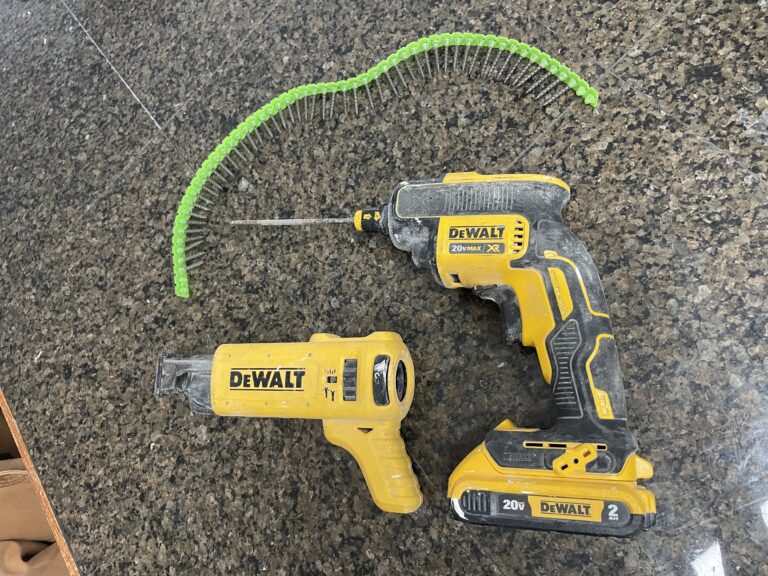Speed Up Drywall Mud Drying Time with Dehumidifiers
Drywall projects can be time-consuming and labor-intensive, but with the use of dehumidifiers, you can speed up the process and ensure the final product is of the highest quality. In this expert guide, we will explain the benefits of using dehumidifiers during drywall installation, the different types of dehumidifiers available, and how to properly use them to accelerate your drywall project.
The Benefits of Using Dehumidifiers in Drywall Projects
Drywall installation requires a specific level of humidity to ensure the proper drying and curing of the joint compound. If the humidity levels are too high, the joint compound can take longer to dry, leading to an extended timeline for your project. On the other hand, if the humidity levels are too low, the joint compound may not cure properly, resulting in a weaker bond and poor quality finish.
Dehumidifiers help to control the humidity levels in the room, ensuring that the joint compound dries and cures properly. This can lead to a faster project completion time and a higher quality final product.
Another benefit of using dehumidifiers is that they can help to prevent mold and mildew growth. High humidity levels can create an environment where mold and mildew can grow, leading to costly repairs and potential health hazards. By controlling the humidity levels, dehumidifiers can help to prevent mold and mildew growth, keeping your drywall project and your home safe.
Using dehumidifiers can also help to prevent paint and wallpaper from peeling or blistering. High humidity levels can cause paint or wallpaper to release moisture, leading to blistering or peeling. By controlling the humidity levels, dehumidifiers can help to prevent this from occurring, resulting in a better finished product.
Different Types of Dehumidifiers
There are several different types of dehumidifiers available, each with its own set of benefits and drawbacks. The most common types of dehumidifiers include:
- Mechanical Dehumidifiers: These dehumidifiers use a fan to draw in air and pass it through a refrigerant coil, which removes the moisture. They are the most popular type of dehumidifier and are suitable for most drywall projects. They are efficient in removing moisture and easy to use.
- Desiccant Dehumidifiers: These dehumidifiers use a desiccant material, such as silica gel, to absorb moisture from the air. They are more effective at lower temperatures and are often used in industrial and commercial settings. These type of dehumidifiers are best suited in cool and colder climates
- Chemical Dehumidifiers: These dehumidifiers use a chemical reaction to remove moisture from the air. They are less common and are primarily used in specialized applications, such as preserving artifacts in museums. They are not used in residential or commercial settings because of high cost and the need of special handling
Selecting the Right Dehumidifier for Your Project
When choosing a dehumidifier for your drywall project, it’s important to consider the size of the room and the humidity level requirements. For example, a small room with low humidity levels will require a smaller dehumidifier than a large room with high humidity levels.
Consider also the type of drywall installation project you are undertaking, for example new construction vs. remodel, or if there are any specific conditions like heavy rains during the project that could affect humidity level.
Another important factor to consider is the noise level of the dehumidifier. If you will be using the dehumidifier while you are working on the project, you may want to choose a model that is designed to be quieter.
Safety Precautions when using Dehumidifiers
When using dehumidifiers, it’s important to follow proper safety precautions. Always read and follow the manufacturer’s instructions before using the dehumidifier. It’s also important to make sure that the dehumidifier is properly grounded and that the electrical cord is not damaged.
Be aware of the potential risks of electric shock or fire hazards, especially when working with electrical equipment.
Dehumidifiers and Energy Efficiency
When using dehumidifiers, it’s also important to consider energy efficiency. Dehumidifiers can consume a significant amount of energy, so choosing an energy-efficient model can help to keep your project costs down. Look for models that have Energy Star ratings or that are designed to be more energy-efficient.
How to Properly Use Dehumidifiers to Accelerate Your Drywall Project
To properly use dehumidifiers to accelerate your drywall project, it is important to understand the specific humidity requirements for your project. The optimal humidity level for drywall installation is between 40-60% relative humidity.
Once you have determined the humidity level requirements for your project, you can then select the appropriate type of dehumidifier and properly set it up in the room. It’s important to choose the correct size of dehumidifier for the room, A dehumidifier that is too small will not be able to effectively control the humidity levels, while one that is too large will be unnecessarily expensive and consume more energy.
It is also important to regularly monitor the humidity levels in the room during the drywall installation process. This can be done with a hygrometer, which is a tool that measures humidity levels. By regularly monitoring the humidity levels, you can ensure that they remain within the optimal range and make adjustments to the dehumidifier as necessary.
In addition to monitoring humidity levels, it’s important to keep the room well-ventilated during the drywall installation process. This can be done by opening windows or using fans to bring in the fresh air. This will help to circulate the air and remove any excess moisture that may be present.
Placement of Dehumidifiers
When setting up a dehumidifier in your drywall project area, it’s important to place it in the right location. The dehumidifier should be placed in the area where the drywall installation is taking place, rather than in an adjacent room. This will ensure that the dehumidifier is able to effectively remove moisture from the air.
It’s also important to make sure that the dehumidifier is not blocked by furniture or other objects. A clear path should be provided for the dehumidifier to pull in air and remove moisture.
Running Time of Dehumidifiers
Dehumidifiers are typically designed to run continuously, but you may need to adjust the running time depending on the humidity levels in the room. If the humidity level is consistently high, the dehumidifier may need to run for longer periods of time to effectively remove the moisture.
On the other hand, if the humidity level is consistently low, the dehumidifier can be run for shorter periods of time or even turned off. It’s important to monitor the humidity levels regularly and adjust the running time accordingly.
Maintaining Proper Humidity Levels
When using a dehumidifier, it’s important to maintain proper humidity levels to ensure that the joint compound dries and cures properly. The optimal humidity level for drywall installation is between 40-60% relative humidity. If the humidity levels drop below 40%, you can use a humidifier to add moisture back into the air.
It’s also important to make sure that the humidity level does not exceed 60%, as this can lead to mold and mildew growth. If the humidity levels consistently exceed 60%, you may need to adjust the settings on the dehumidifier or consider purchasing a larger unit.
Tips for Maintaining Your Dehumidifier
To ensure that your dehumidifier is running effectively, it’s important to perform regular maintenance on it. This can include cleaning the filter and emptying the water reservoir. If your dehumidifier has a built-in humidistat, it’s also important to check it periodically to make sure that it’s accurate.
In addition to regular maintenance, it’s also important to keep the area around your dehumidifier clear. Dehumidifiers need a clear area to effectively pull in air and remove moisture. If the area around your dehumidifier is cluttered, it can reduce its effectiveness.
Conclusion
Using dehumidifiers during drywall installation can accelerate the project and ensure a high-quality final product. By controlling the humidity levels in the room, dehumidifiers can help the joint compound to dry and cure properly, leading to a faster project completion time. They can also help prevent mold and mildew growth, paint and wallpaper peeling, keeping your drywall project and your home safe.It’s important to choose the right type of dehumidifier, monitor humidity levels and perform regular maintenance on the dehumidifier to ensure it’s working at optimal capacity. With the help of a dehumidifier, you can be sure that your drywall project will be completed on time and to the highest standard.





